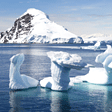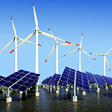- Home >
- Our Actions >
- Ambassador report
5
Comments
URBAN HEAT ISLAND |
|---|
|
by Yvonne Wabai | 22-08-2017 05:13
|
 INTRODUCTION 'Urban heat island' is a term used to refer to an urban or metropolitan area that is significantly warmer than its surrounding areas. This increase in warmth is attributed to human activities such as land modifications e.g buildings and roads. The temperature difference is usually larger during the night than it is during the day, and it is mostly noticeable during summers and winters. .png) CAUSES OF URBAN HEAT ISLAND (UHI) UHI can be traced back to the geography of a place being disrupted by materials that heat up faster and absorb more heat. For example, dark surfaces are good absorbers of heat (they absorb heat very quickly) and good emitters of heat (they emit heat very quickly). Light surfaces on the other hand tend to reflect heat more than they absorb it, hence are bad absorbers of heat. Light surfaces are also bad emitters of heat. Basically, good absorbers are good emitters - that's a law of thermodynamics. What this means, in the context of UHI, is that pavements, roofs, and roads, commonly made of asphalt and concrete which are dark surfaces, absorb a lot of heat during the day when it is sunny. This is why in some cities, especially reported in Australia, people are warned of wearing plastic shoes during the summer as the plastic melts while they are walking on the roads and pavements and their feet are badly burned. These surfaces emit heat during the night. On the other hand, light and reflective surfaces, such as the ones used in buildings, tend to reflect the heat. Because urban areas have many buildings, there are multiple surfaces for the heat to be reflected on and what happens is that the heat energy 'bounces' off from surface to surface. And, because there isn't that much vegetation in cities, the cooling effect of trees is not present, as well as the absorption of carbon (iv) oxide.  UHI IN KENYA Scientists studying UHI in Kenya have found that the phenomenon is recently starting to affect the Kenyan cities of Nairobi, Kisumu, and Mombasa as well as the urban area of Thika. Studies were concentrated on Nairobi and it was found that Nairobi has several micro-climates, with UHI being exhibited in some of those micro-climates e.g. in Kibera. The presence of the micro-climates is due to Nairobi having heterogeneous surfaces i.e. different types of surfaces existing together, e.g paved roads, high rise buildings and low vegetation in the central business district, and metal housing, little vegetation, and lack of access to government services in informal settlements otherwise known as slums.  EFFECTS OF UHI The increased temperatures affect the living things in the area. Plants experience stunted growth and/or wilt and animals and people suffer from hyperthermia. There has been an increased reporting of heat shock, heat exhaustion, and sun burns in the cities and most people affected do not have access to sunscreens hence raising the risk for skin cancer. Studies have also shown that heat stroke can lead to permanent damage of organ systems. Increased temperatures in water bodies leads to a decrease in biodiversity in said water bodies. Furthermore, urban heat islands change the climate and weather patterns of the affected areas and the urban areas may find themselves experiencing floods, droughts, and tornadoes more frequently.  SOLUTIONS TO UHI 1. Green architecture and urban planning i.e. green buildings, green parking lots, and planting trees in urban areas, amongst others. 2. Adopting an eco-friendly lifestyle e.g. using energy-efficient appliances and equipment at home and at work. 3. Creating awareness. 4. Implementation of heat-reduction policies. Read more about UHI here. REFERENCES. 1. Meteorological department, University of Nairobi. 2. Conservative Energy Future (CEF) magazine. 3. Wikipedia. |

|
|
|










 Previous : Urban Heat Island Effect
Previous : Urban Heat Island Effect









5 Comments
impact of climate change
Posted 02-02-2018 16:27
Well structured article. The graphs statistics make it even more interesting to read
Posted 24-08-2017 12:20
Great and insightful article with beautiful presentation skills mate. Thanks for sharing .
Posted 23-08-2017 20:39
Great article! We've just discussed this on our climate change action plan for our city last week.
Posted 22-08-2017 16:58
Thanks for the info Yvonne
Posted 22-08-2017 15:25